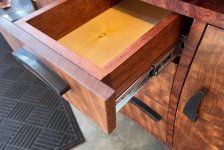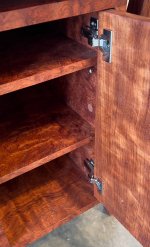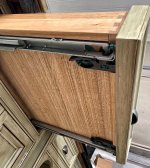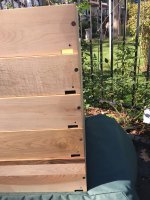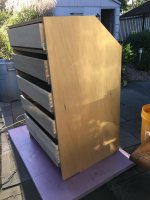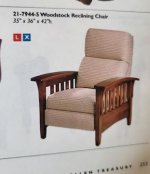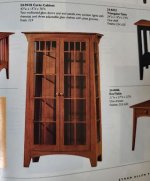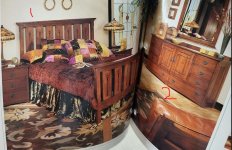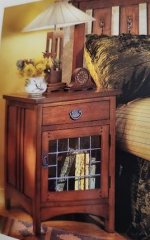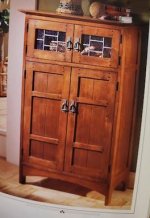There's a lot going on with this, in the pics and the comments. [blink]
I agree with most of what has been said. It just seems mixed/confused. From the outside, it looks fine, a rather bold aesthetic, which is purely in the eye of the beholder. There really is no judging that, it's an individual choice.
Inside however, is a series of things. Some will be an issue to us and people of similar expectations and some that would go totally unnoticed by the average consumer. Some of what we notice would be deal-breakers, others just mildly annoying.
For me, scrolling down the pics, the first thing I saw was butt joints going the wrong direction. Regardless of the joinery method or strength, this is never acceptable to me. It just screams wrong.
Second was the drawer guides. In a piece like this, I would expect wood, but would not be offended by undermount metal.
Next, the cup hinges. Again, I would expect almost any other form, exposed leaf hinges being the least desirable. Soss, knife, or some other un-obtrusive would be far better.
The FastCap style patch/plug is most offensive because no attempt was made to disguise it, no stain....nothing.
I would assume that the "extra hole" was a first position of the shelf? which was changed? or even an alternate, that we can't determine from the photo?
I have no problem with the concept of veneering, especially on interior parts, but the grain direction?
It has to be going the same way as the bottom.
Bottom of the drawer, no problem with the plywood, but not with the patch. I wouldn't consider the "it's covered up in use" as acceptable either. Cover it up with a piece of leather.....ok. Veneer it too? better.
I also dislike the sizing and location of the drawer pulls. It seems odd that the longest pull is on the narrowest drawer. The spacing seems disproportionate too. For me, they either need to be equal or centered on the vertical dimension.
I'm thinking that an edge treatment of some kind was a missed opportunity. Maybe a cove? That might be too much, but it would be worth a test.
I sure hope [member=77266]smorgasbord[/member] didn't build this and come at it with a story of "seeing to somewhere".....he will never talk to us again...... [big grin]


